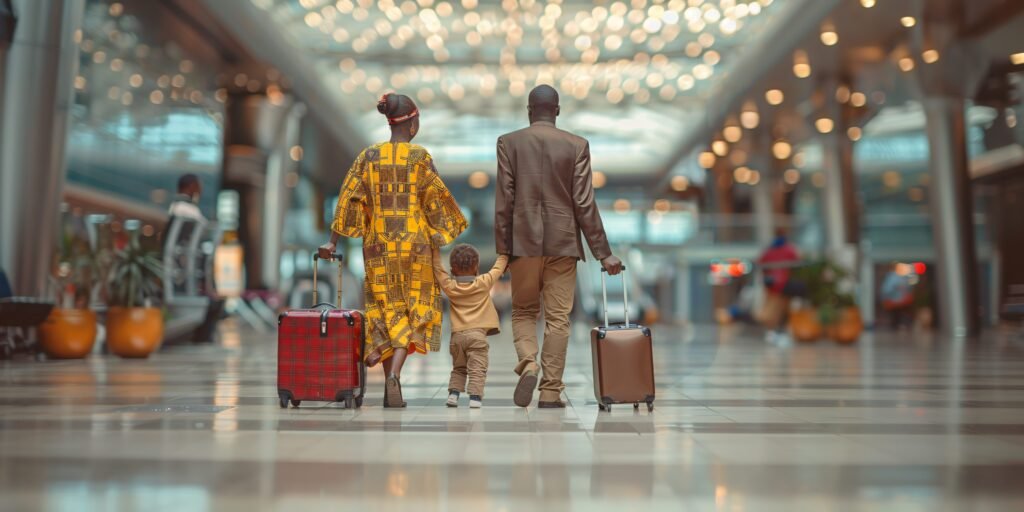Travel networks have long shaped the way people, goods, and cultures move across regions. In today’s interconnected world, routes are more than pathways; they represent a framework through which societies exchange knowledge, trade, and experiences. Wayfarer Weekly highlights the importance of mapping these global travel structures, outlining the role they play in international connections. By examining the composition of air, land, and sea networks, it becomes possible to understand the systems that guide global mobility.
This article examines global route structures across transportation categories, regional hubs, and the evolving nature of networks. It emphasizes the methods by which routes are organized, how different modes of transport integrate, and what patterns define their usage. By focusing on these neutral aspects, the discussion remains centered on the structure of travel pathways while concluding with observations on the balance of travel flows.
Air Route Structures

Global Flight Networks
Wayfarer Weekly Air travel remains central to international connectivity. Routes are structured around hubs, airports, and long-haul corridors that link major cities. Key hub airports function as connecting points where regional flights meet intercontinental services. These hubs, such as Dubai, Singapore, London, and Atlanta, exemplify the nodal system of aviation networks.
Air routes are mapped according to demand, geographical positioning, and airline strategies. Network carriers establish hub-and-spoke systems, while low-cost carriers focus on point-to-point connections. Together, these patterns shape global accessibility.
Regional Air Corridors
Air routes are often structured within regional frameworks. For example:
- Europe relies on dense intra-continental networks linking cities within short distances.
- Asia-Pacific combines large metropolitan hubs with growing secondary cities.
- North America centers on transcontinental routes complemented by smaller regional lines.
These corridors highlight how regions organize their airspace to facilitate both domestic and cross-border movement.
Land Route Structures
Road Networks
Wayfarer Weekly Road infrastructure is among the oldest forms of travel routes. Highways, expressways, and transnational corridors create structures that link urban and rural zones. Systems such as the Pan-American Highway and the Trans-European Transport Network serve as examples of structured connectivity.
Route structures are influenced by geography, governance, and economic activity. Roads enable both personal travel and freight transport, reflecting their dual function within travel frameworks.
Railway Systems
Railways remain essential in structuring land routes, particularly in regions with dense populations and industrial activity. High-speed rail systems in East Asia and Europe demonstrate structured corridors designed for efficiency. Freight rail in North America highlights long-haul land connections across borders.
The organization of rail routes often mirrors trade patterns, urban concentrations, and historical infrastructure development. These structures continue to adapt as rail expands into modernized interregional lines.
Sea Route Structures
Global Shipping Lanes
Wayfarer Weekly Maritime networks form the backbone of international trade and travel. Routes across oceans are structured around shipping lanes and port systems. Narrow passages such as the Suez Canal, Panama Canal, and Strait of Malacca serve as focal points within these networks.
Passenger ferry systems, though less prominent than freight, also create structured sea travel corridors. They operate within archipelagos, island nations, and coastal regions, reinforcing localized connectivity.
Cruise and Passenger Routes
Cruise lines map itineraries that connect ports across continents, while ferries link islands and coastal areas. Route structures are determined by navigable waters, port infrastructure, and regional demand. These patterns provide a framework for sea-based passenger mobility.
Multimodal Integration
Travel routes rarely exist in isolation. Modern systems integrate multiple forms of transport into seamless structures. Airports connect to rail lines, seaports integrate with highways, and cities link bus networks with urban transit.
This integration ensures that a traveler can move from one continent to another using air, land, and sea modes within a coordinated framework. Wayfarer Weekly often highlights how multimodal nodes play a critical role in structuring global connectivity.
Regional Route Structures

Europe
Europe’s structured travel routes combine dense rail networks, established road corridors, and interconnected airports. Regional integration ensures continuity across borders.
Asia-Pacific
Asia-Pacific routes emphasize rapid urban growth, hub airports, and high-speed rail expansion. Maritime routes also support dense inter-island connections in Southeast Asia.
Africa
Route structures in Africa are influenced by geography and infrastructure development priorities. Corridors link major cities with ports and inland trade zones.
Americas
North and South America highlight structured aviation hubs, cross-border highways, and transcontinental railways. Coastal routes also strengthen trade and mobility.
Digital Mapping of Routes
Wayfarer Weekly Modern mapping tools provide real-time visibility into travel structures. Digital applications track flights, trains, buses, and ships, offering travelers and planners structured insights into global movement.
Mapping reveals not only pathways but also frequency, density, and connectivity. It creates a clearer picture of how travel routes evolve in response to changes in population and trade.
Patterns in Global Travel
When observing global route structures, patterns emerge that highlight the logic behind connectivity. These include:
- Hub Concentration: Routes cluster around central nodes.
- Corridor Focus: Key pathways dominate long-distance travel.
- Integration: Land, air, and sea systems combine into multimodal structures.
- Regional Balance: Different regions adopt unique travel structures based on geography.
These patterns, consistently tracked by publications like Wayfarer Weekly, provide a neutral framework for analyzing connectivity.
Historical Context of Route Structures
Wayfarer Weekly Routes have always shaped the way societies function. From the Silk Road and maritime trade lanes to rail expansion in the industrial era, travel structures mirror human development. Modern routes follow similar principles but adapt to technology and demand.
By tracing historical frameworks, one can observe how past structures continue to influence present travel pathways.
The Evolution of Connectivity
Global travel structures evolve alongside technological innovation and population shifts. Emerging corridors in Asia, transcontinental rail proposals, and expanded maritime connections represent the ongoing adaptation of routes.
The future of travel will likely include further integration between digital mapping, sustainable infrastructure, and multimodal nodes. Wayfarer Weekly captures these transitions in its coverage, providing a structured account of global connectivity.
Conclusion
Travel routes form the backbone of global connectivity. Whether in the air, on land, or across the sea, structured pathways organize how people and goods move around the world. The framework of hubs, corridors, and multimodal integration ensures continuity across regions.
By examining global route structures, one gains a clear understanding of how connectivity operates beyond individual trips. The study of these patterns, as highlighted in Wayfarer Weekly, emphasizes the balance between structure, function, and integration within worldwide mobility.




